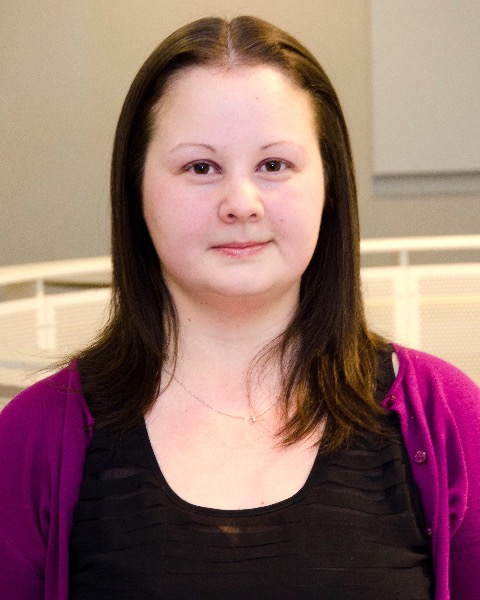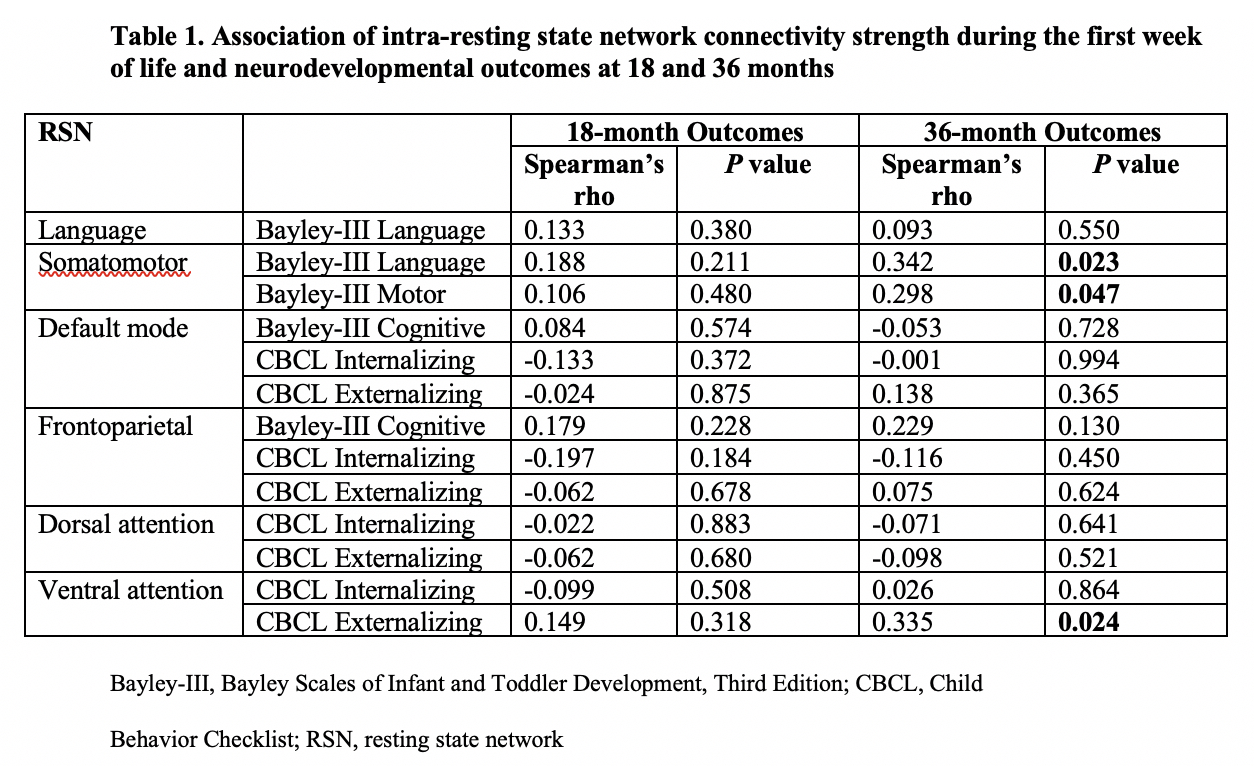Neonatal Neurology: Clinical Research
Neonatal Neurology 3: Clinical 3
188 - Early life resting state network functional connectivity is associated with long-term neurodevelopmental outcomes after neonatal encephalopathy
Friday, April 28, 2023
5:15 PM - 7:15 PM ET
Poster Number: 188
Publication Number: 188.137
Publication Number: 188.137
Daphne Kamino, The Hospital for Sick Children, Toronto, ON, Canada; Anwar S.. Shatil, The Hospital for Sick Children, Toronto, ON, Canada; Jessy Parokaran Varghese, The Hospital for Sick Children, Kitchener, ON, Canada; Elysa Widjaja, The Hospital for Sick Children, Toronto, IL, United States; Eva Mamak, The Hospital for Sick Children, Toronto, ON, Canada; Benjamin T. Dunkley, The Hospital for Sick Children, Toronto, ON, Canada; Vann Chau, The Hospital for Sick Children, Toronto, ON, Canada; Linh Ly, University of Toronto Temerty Faculty of Medicine, Toronto, ON, Canada; Emily WY. Tam, The Hospital for Sick Children, Toronto, ON, Canada

Daphne Kamino, MSc, CCRP, PMP (she/her/hers)
Clinical Research Project Manager
The Hospital for Sick Children
Toronto, Ontario, Canada
Presenting Author(s)
Background: Resting state functional MRI (rsfMRI) is a powerful tool for investigating regional interactions of functional brain networks in neonates. It is unknown whether early neonatal resting state network (RSN) architecture can predict neurodevelopmental outcomes after neonatal encephalopathy (NE).
Objective: To investigate the relationship between intra-RSN functional connectivity in the first week of life and neurodevelopmental outcomes at 18 and 36 months after NE.
Design/Methods: A prospective cohort of neonates ≥36 weeks GA had brain MRI in the first week of life, and follow-up at 18 and 36 months. NeoRs, a robust open-source rsfMRI preprocessing pipeline for neonates, generated mean Z-scores for 27 seeds that represented 6 RSNs of interest (language, somatomotor, default mode, frontoparietal, dorsal attention, ventral attention). Spearman’s correlations measured the strength of associations between predefined intra-RSN connectivity (averaged mean Z-scores of seeds for each RSN) and neurodevelopmental outcomes at 18 and 36 months.
Results: Of 108 neonates enrolled, 72 (67%) had rsfMRI data, of which 52 (72%) were of adequate quality to undergo NeoRs. All neonates underwent therapeutic hypothermia. Using Barkovich scoring, 3 (6%) neonates had basal ganglia only, 1 (2%) had watershed only, and 10 (19%) had both brain injury patterns. Of 52, 47 (90%) neonates had follow-up at 19±2 months, and 45 (87%) neonates had follow-up at 37±2 months. At 18-month follow-up, means for Bayley-III composite scores were 96±13 for cognitive, 90±15 for language, and 97±16 for motor, and means for Child Behavior Checklist (CBCL) composite T-scores were 44±10 for internalizing and 47±9 for externalizing problems. At 36-month follow-up, means for Bayley-III composite scores were 96±15 for cognitive, 96±19 for language, and 94±15 for motor, and means for CBCL composite T-scores were 49±11 for internalizing and 46±10 for externalizing problems. Spearman correlation analyses revealed that intra-network connectivity within the somatomotor RSN was positively correlated with Bayley-III language (P=0.023) and motor (P=0.047) composite scores, and intra-network connectivity within the ventral attention RSN was positively correlated with CBCL externalizing composite T-score (P=0.024) at 36 months (Table 1). Intra-RSN connectivity was not correlated with 18-month outcomes.
Conclusion(s): Intra-RSN functional connectivity in the first week of life is correlated with neurodevelopmental outcomes at 36 months after NE. Early rsfMRI could provide meaningful clinical insight for predicting long-term neurodevelopmental outcomes after NE.

